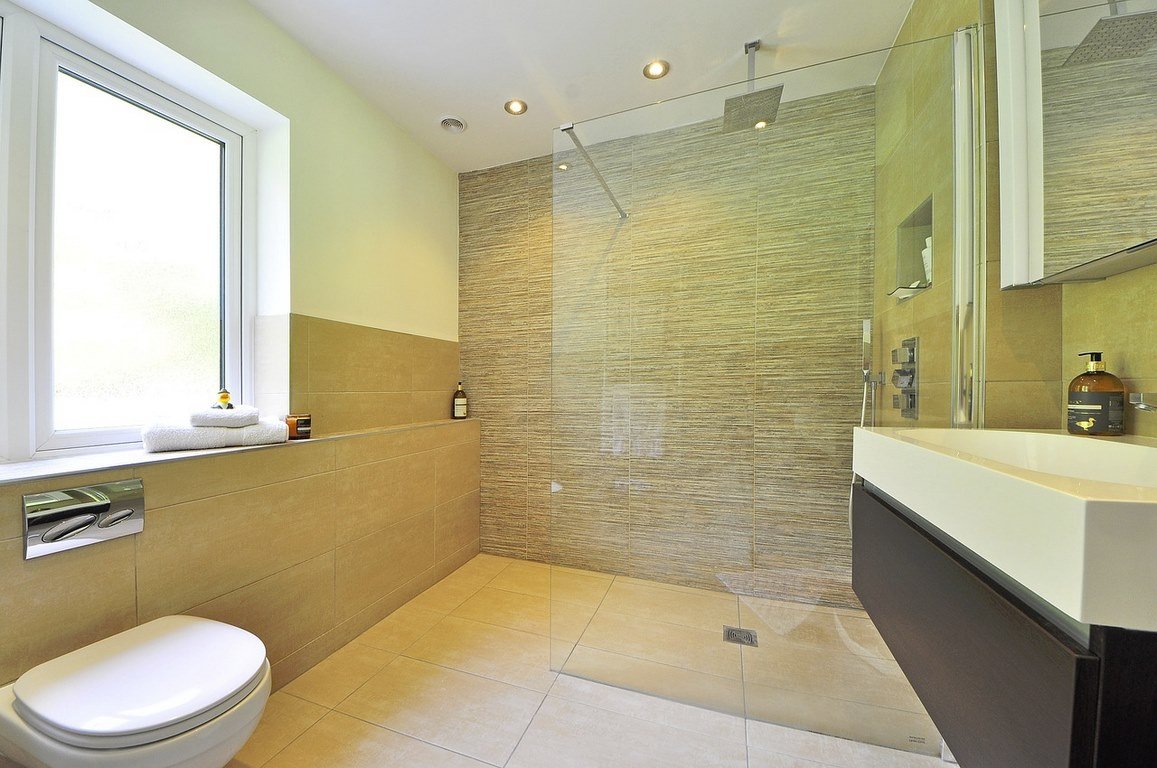Table of Contents Show
Your shower is one of the most useful appliances in your home, and yet in spite of its importance, it is also one of the most overlooked items when it comes to maintenance.
Showers can accumulate a lot of wear and tear over time, so sensible homeowners will not only aim to keep them in good working order but also to think about potential upgrade paths.

With that in mind, here are some pieces of advice to consider if you are looking to save cash while still managing to maintain and even upgrade your shower in a DIY manner.
Sort Out Shower Door Issues
While some showers shield the rest of the bathroom from splashes using a waterproof curtain, others have doors that are either hinged or are mounted on rails for easy sliding.
Of course, as soon as the mechanical parts for shower doors start to malfunction, this could become a noisy, juddery annoyance.
In some cases, the only option will be to replace the nuts and bolts outright, which is thankfully easy thanks to the wealth of affordable, compatible options available online.
This is a simple job in most cases, and so long as you have a screwdriver set to hand, you will not need professional assistance.
When it comes to rail-mounted doors not working smoothly, adding a little lubricant can smooth things out in a jiffy; just be sure that the lubricant you choose is suitable for use with the types of surfaces and materials that are present.
Clean or Replace Your Showerhead
The other most common shower maintenance snafu occurs when the head of the shower itself stops spraying water as it should.
The typical culprit for this is the buildup of lime scale over time, and the speed with which this happens will vary depending on the hardness of the water in your area.
Detaching your showerhead and soaking it in a solution of water and vinegar for a few hours is a good way to remove these mineral deposits, and also bring the shine back to the surface of the device.
Replacing the showerhead outright is also relatively affordable, and could be a good option if your water pressure is not particularly high and you want to opt for a rainfall-style head that will make the best of an imperfect situation.
Read Also:
- Shower Heads: Choosing the Best Model for Your Needs & Bathroom Design
- Shower Waterproofing Products for Increasing the Lifespan of Tiles
- Types of Shower Valves – Which One Did You Choose?
- 3 Shower Upgrade Ideas for Your Next Home Project
- Installing a Shower Grates – A Complete Guide
- How to Replace a Bathtub with a Shower
Invest In a Shower Caddy
This could be the single best choice for sprucing up your shower and making it easier to maintain, especially when you compare the minimal cost of buying a shower caddy against the massive impact it can have.
You can pick up caddies for less than $20 in lots of places, and while some will need to be fixed to the wall which requires a bit of DIY nous and a familiarity with power tools, others will be able to hang off your fittings and fixtures, or even use suction to secure to a glass or tile surface.
Being able to keep all of your gels, shampoos, conditioners, and other shower products in one place will de-clutter the room, make it look neater, and also avoid leaving marks and stains on other surfaces.
Remove Mold Quickly
Showers are damp environments, and so mold can form quite easily even if you do your best to improve ventilation.
Rather than allowing mold to fester, buy a cheap mold remover from your local hardware store and use this in relevant areas, such as the grouting between tiles and the sealant around the shower tray.
Follow these tips and you can keep your shower in top notch condition for longer, and impress guests as well!









